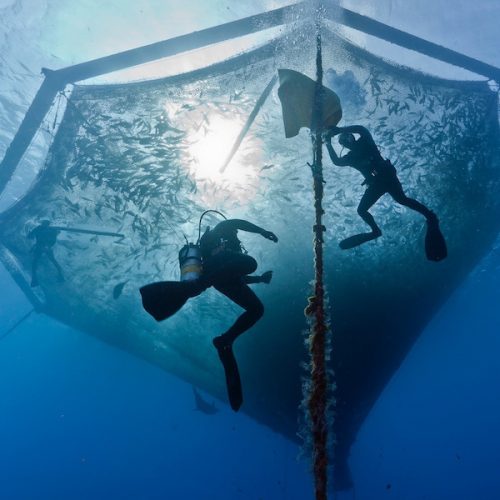Marine aquaculture -America forges ahead
“‘We will help aquaculture grow faster by reducing regulatory burden and driving research’ – U.S. Department of Commerce . ” America is planning a one-stop shop for federal approval of marine aquaculture permits as it looks to increased sustainable farming of its oceans. It will also boost aquaculture research to accelerate the growth of the U.S. seafood industry to create jobs and boost the economies of coastal seafood communities.
“Marine aquaculture in the United States contributes to seafood supply, supports commercial fisheries, and has great growth potential. We will help it grow faster by reducing regulatory burden and driving aquaculture research,” the U.S. Department of Commerce stated in its recent 2018-2022 Strategic Report.
According to Seafoodsource.com, the United States has not been a significant player in the marine aquaculture industry. According to the World Bank, aquaculture produced more than 106 million metric tons (MT) of seafood in 2015. That’s more than double the seafood farms created in 2003 and more than 50 times the yield reported in 1960.
In 1960, the United States ranked fourth in the world, harvesting 104,421 metric tons of the more than two million MT produced worldwide.
In 2015, America was responsible for just 426,000 MT – or just 0.4 percent of the worldwide harvest. That put it 18th in the world in aquaculture production, trailing such countries as Ecuador, Malaysia, and North Korea.
By contrast, the United States ranks No. 1 in the world in poultry and beef production.
As part of its strategy to boost aquaculture, the US Department of Commerce said it will work with the U.S. Army Corps of Engineers, the U.S. Environmental Protection Agency, other federal agencies, and coastal states to streamline federal marine aquaculture permitting.
This will create a more predictable and timely permit review process, and allow businesses to begin operation more rapidly, thus accelerating the growth of the U.S. seafood industry.
The department also plans to support research to advance marine aquaculture.
“In collaboration with industry, we will support research to advance commercial-scale marine aquaculture production. We will implement pre-competitive commercial scale demonstration facilities in collaboration with—and co-funded by— industry and coastal seafood communities. These pilot programs will facilitate the commercial viability of marine aquaculture production,” the department said.
The National Oceanic and Atmospheric Administration (NOAA) will also use aquaculture research to remove production bottlenecks related to siting, disease, genetics and genomics, hatchery seed stock, and feed availability.
Meanwhile, U.S. Senator Roger Wicker, (R-Miss.), has introduced a bill that would streamline the permitting process for aquaculture farms in American waters.
The bill is similar to calls in Canada for a Federal Aquaculture Act that will provide a modern legal framework for managing the marine aquaculture sector.
Thousands of B.C. businesses in British Columbia have lent their support for a Federal Aquaculture Act to clarify industry responsibilities and provide fair access to long term fish farm tenures.
The push for a Federal Aquaculture, which has been embraced by BC salmon farmers, was mooted by the Campbell River Chamber of Commerce.
It was tabled as a resolution at the BC Chamber of Commerce Annual General Meeting, last Spring. The BC Chamber of Commerce represents more than 125 Chambers of Commerce and Boards of Trade, and 36,000 businesses.
The resolution passed with a clear two-thirds majority said Jessica Gares, Director of Communications, for the BC Chamber of Commerce, adding the recommendations will now be relayed to the minister responsible via a letter.
RELATED LINKS
More countries around the world turning to fish farms: UN
Sweeping closures in British Columbia for 2019 fishing season
